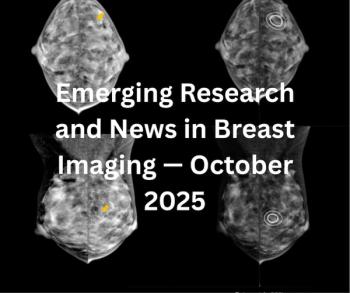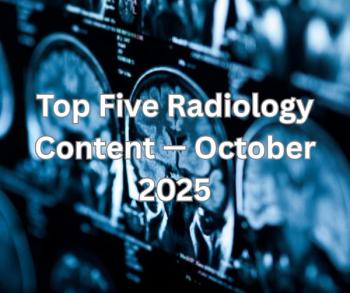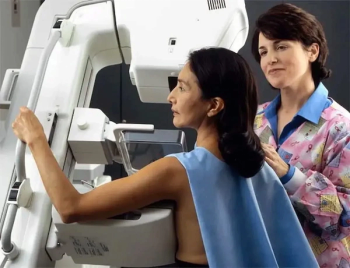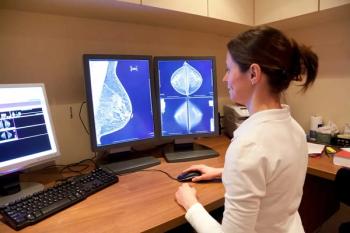
Breast Tomosynthesis Plus Mammo Improves Accuracy
Adding digital breast tomosynthesis to digital mammography significantly increases the accuracy of the mammography, compared with full-field digital mammo.
Adding the use of digital breast tomosynthesis to digital mammography increases the accuracy of the mammography, compared with full-field digital mammography, according to a study in the October issue of
Researchers from King’s College Hospital in London, UK, evaluated 738 women who between January 2009 and July 2010 had been recalled for assessment following routine screening with screen-film mammography. All women underwent bilateral two-view full-field digital mammography (FFDM) and two-view digital breast tomosynthesis (DBT). Lesions on the images were scored separately for probability of malignance on the screen-film mammography, FFDM and DBT.
The readers found 204 malignancies (26.8 percent), of which 147 were invasive and 57 were in situ tumors. Two hundred eight six (37.68 percent) were benign and 269 (35.4 percent) were considered normal.
Using receiver operator characteristics (ROC) analysis and measurement of area under the curve (AUC), the researchers assessed and compared the accuracy of the three imaging methods.
According to the AUC values, diagnostic accuracy significantly improved when DBT was combined with either FFDM or film-screen mammography (AUC = 0.9671), when compared to FFDM plus film-screen mammography (AUC = 0.8949) and film-screen mammography alone (AUC = 0.7882). Soft-tissue lesions were detected significantly more often with the combination imaging as well.
“The addition of DBT increases the accuracy of mammography compared to FFDM and film-screen mammography combined and film-screen mammography alone in the assessment of screen-detected soft-tissue mammographic abnormalities,” the authors concluded.
Newsletter
Stay at the forefront of radiology with the Diagnostic Imaging newsletter, delivering the latest news, clinical insights, and imaging advancements for today’s radiologists.






























